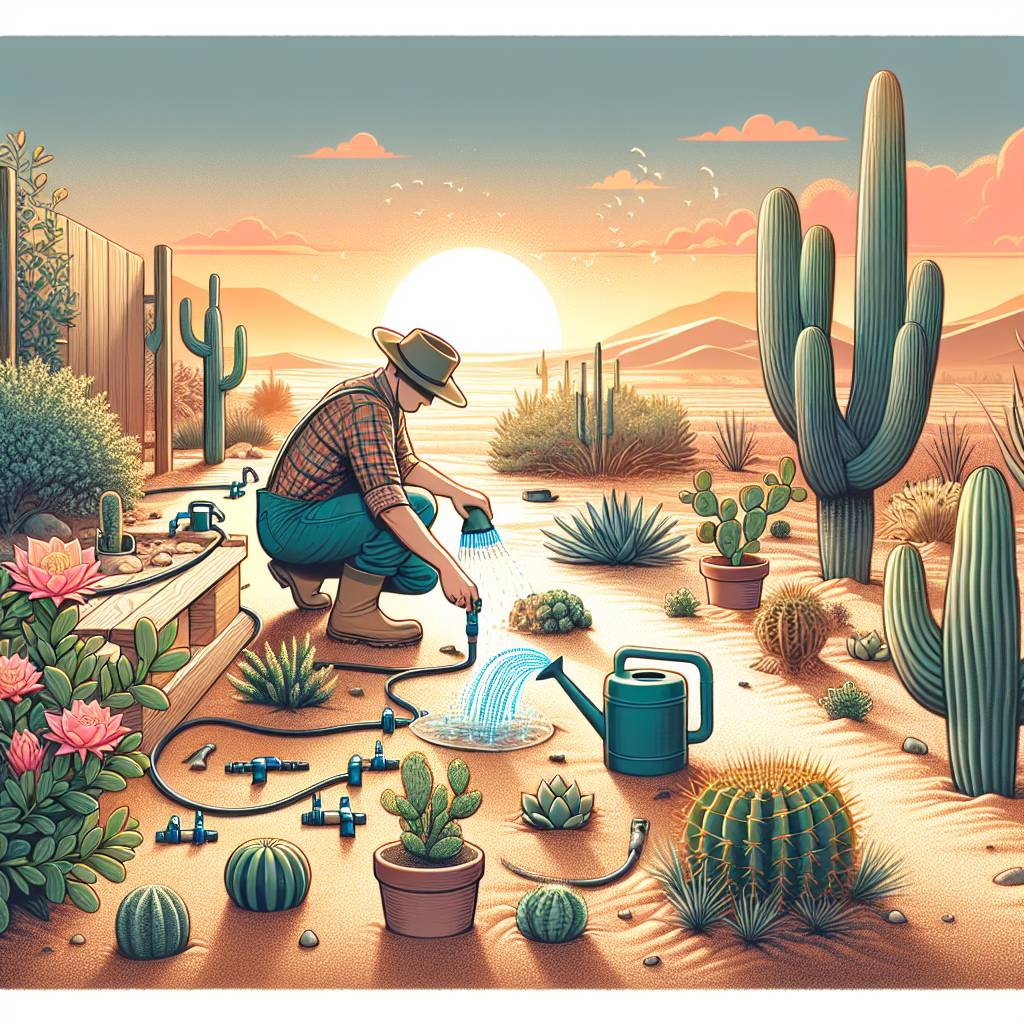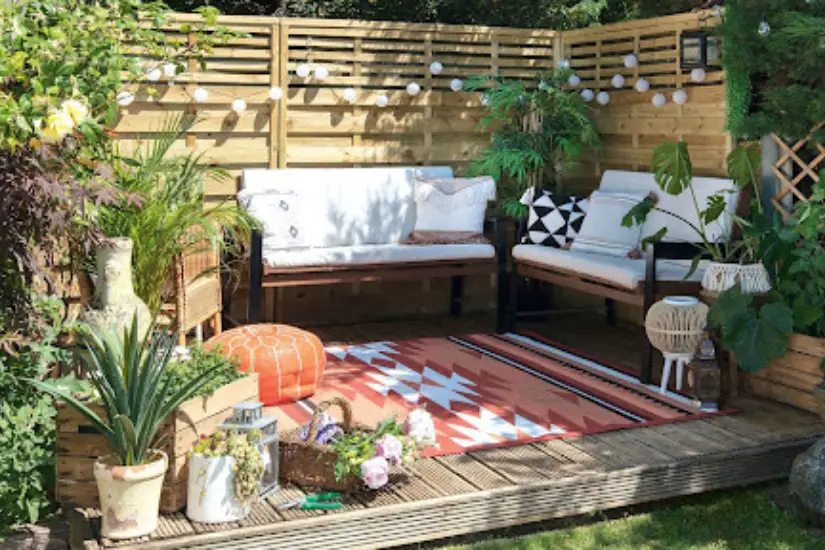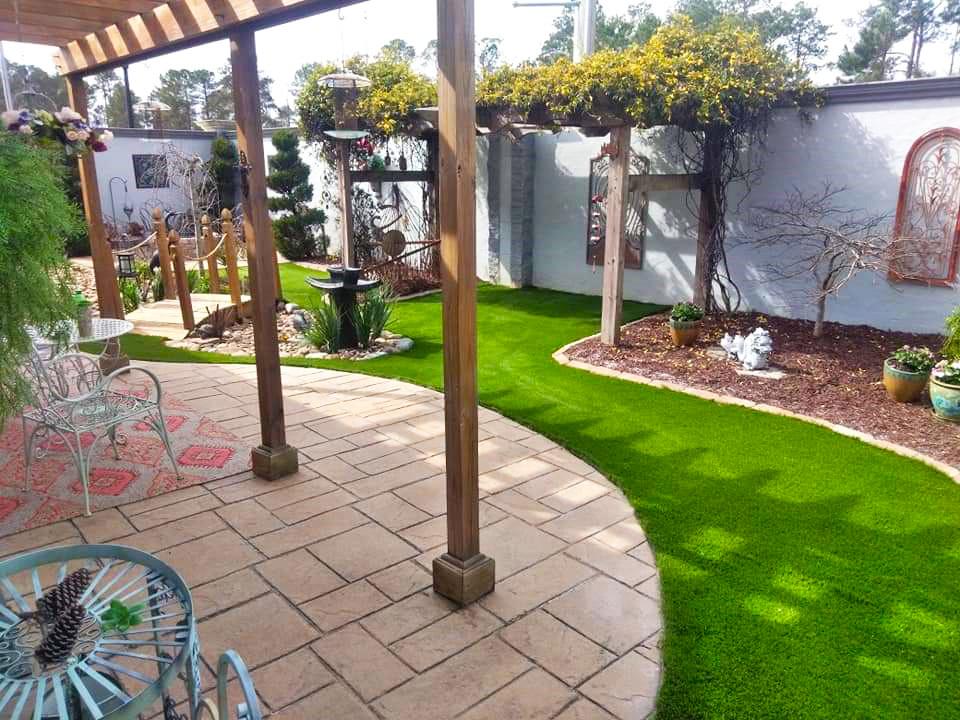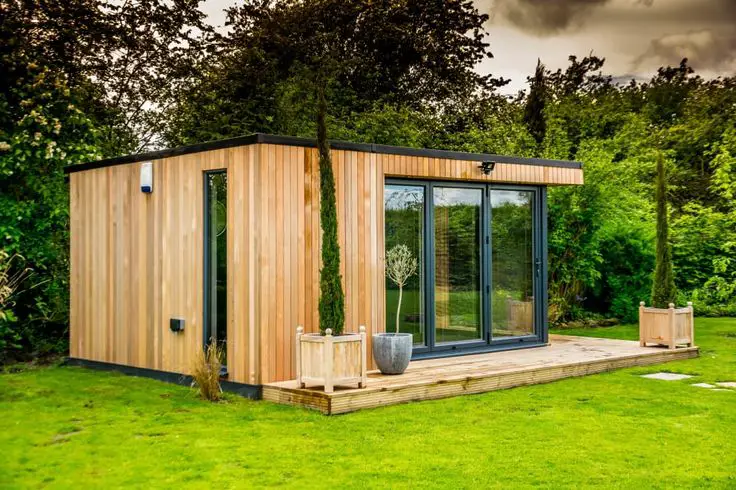Planning to turn your arid backyard into a flourishing oasis? Embracing the challenge of gardening in dry climates can be both daunting and rewarding. In this post, we’ll explore effective strategies and tips for successful gardening in arid regions. From selecting drought-resistant plants to optimizing water usage in an arid climate, we’ve got you covered.
Creating an inviting green space amidst the aridity requires a unique approach compared to traditional gardening methods. With our expert insights, you’ll learn how to nurture vibrant flora in arid climate while conserving precious water resources.
Key Takeaways
- Embrace arid climate gardening by selecting drought-tolerant plants and adapting to the unique environmental conditions.
- Implement water conservation strategies such as drip irrigation, rainwater harvesting, and mulching to minimize water usage and maintain soil moisture.
- Master soil and compost management to improve water retention and nutrient levels in arid environments.
- Choose suitable plant varieties and time your planting to coincide with optimal growing conditions in arid climates.
- Explore container and micro gardening as efficient ways to cultivate plants in limited space while conserving water.
- Utilize mulching and appropriate fertilization techniques to protect plants, retain soil moisture, and enhance nutrient levels in arid gardens.
Embracing Arid Climate Gardening
Understanding Aridity
Aridity refers to dry climates with low rainfall and high evaporation rates. This leads to arid climate, dry, infertile soil, limited water availability for plants. Understanding aridity is crucial for successful gardening in such conditions.
When dealing with arid climates, it’s essential to comprehend the challenges posed by low rainfall and high evaporation rates. The factors lead to soil that lacks moisture, making it difficult for many plant species to thrive. The limited water availability presents a significant obstacle when attempting traditional gardening methods.
Gardeners must acknowledge that arid climates demand special attention due to their unique characteristics. By understanding these specific challenges, gardeners can tailor their approach accordingly.
Garden Audit
Before implementing any changes or new practices, conducting a thorough garden audit is crucial. This involves assessing the existing garden layout, plant types, and watering systems. Identifying areas of improvement for water conservation and plant health is an integral part of this process.
During the garden audit phase, it’s important to take stock of all existing elements within the landscape. This includes evaluating current irrigation systems, identifying plant species that are struggling in the harsh climate conditions, and pinpointing areas where water might be unnecessarily wasted.
By performing a comprehensive assessment through a garden audit process prior to making any adjustments or additions, individuals can gain valuable insights into what changes need to be made within their gardens specifically tailored towards thriving in arid climates.
Decision Making
Decision-making plays a pivotal role in embracing gardening practices suitable for arid climates. It involves choosing drought-tolerant plants that are naturally suited for such conditions as they require minimal watering. Considering xeriscaping techniques is vital as they help reduce overall water usage while maintaining an aesthetically pleasing landscape design. Decisions regarding sustainable gardening methods should revolve around selecting options best suited for conserving resources while ensuring optimal growth despite challenging environmental circumstances.
Water Conservation Strategies
Watering Guidelines
Implementing deep watering techniques is crucial for promoting deep root growth in plants. This method involves applying water slowly and deeply to encourage roots to grow downwards, seeking moisture at lower soil levels. By doing so, plants become more resilient during dry periods as their roots can access water from deeper within the ground.
Using drip irrigation or soaker hoses helps minimize water loss through evaporation by delivering water directly to the base of plants. Unlike traditional sprinkler systems that can lose significant amounts of water due to wind and heat, drip irrigation and soaker hoses provide a targeted approach, ensuring maximum efficiency in arid climates.
Following specific watering guidelines is essential for conserving water in arid climates. By understanding the unique needs of different plant species and adjusting watering schedules accordingly, gardeners can avoid overwatering while maintaining optimal moisture levels for healthy growth.
Moisture Management
Incorporating a layer of mulch around plants helps retain soil moisture by reducing evaporation caused by sun exposure and wind. Mulch acts as a protective barrier, keeping the soil cool and damp underneath while also suppressing weed growth.
To further enhance moisture retention, consider adding organic matter or using hydrogels, which are superabsorbent polymers that hold large amounts of water. These additives help regulate soil moisture levels by releasing stored water when the surrounding environment becomes drier.
Effective moisture management is critical for sustaining plants in arid environments where natural precipitation may be scarce or sporadic. By employing these methods, gardeners can create a more favorable microclimate around their plants, supporting their overall health and vitality even in challenging conditions.
Soil Salinity
Testing soil salinity levels is necessary to determine if amendments are required to address excessive salt content within the soil. High levels of salinity can hinder plant growth by disrupting nutrient uptake and impeding proper absorption of water by plant roots.
Addressing soil salinity issues is vital for successful gardening in arid regions since it directly impacts the ability of plants to thrive under such harsh environmental conditions. Through appropriate measures such as leaching excess salts from the soil or incorporating gypsum-based amendments, gardeners can mitigate these challenges effectively.
Soil and Compost Mastery
Soil Preparation
Improving soil structure and drainage is crucial for successful gardening in arid climates. Proper tilling and incorporation of amendments help create an environment where plants can thrive. By adjusting the pH levels, gardeners can establish an optimal growing setting for arid-adapted plants. Adequate soil preparation forms the basis for flourishing gardens in dry regions.
For instance, incorporating organic matter like compost into the soil improves its ability to retain water, essential in arid environments where water conservation is paramount. Adding sand to clay soils enhances their drainage capacity, preventing waterlogging during rare heavy rains.
Homemade Mixes
Creating custom soil mixes using locally available materials such as sand, compost, and peat moss offers tailored solutions for arid climate gardening. These homemade mixes can be specifically designed to meet the unique needs of plants that thrive in dry conditions. Moreover, utilizing homemade mixes presents a cost-effective approach to cultivating gardens in arid climates.
For example, blending sand with other organic materials allows gardeners to create well-draining soil suitable for succulents and cacti commonly found in desert landscapes. This adaptable mix not only promotes healthy plant growth but also minimizes excessive moisture retention that could harm these drought-resistant species.
Composting Techniques
Employing effective composting techniques plays a pivotal role in enriching the soil with organic matter while enhancing its water-holding capacity. In arid gardening settings, this practice reduces reliance on chemical fertilizers while promoting sustainable cultivation methods.
Plant Selection and Timing
Locally Adapted Plants
Choosing locally adapted plants is crucial for successful gardening in arid climates. These plants are naturally equipped to thrive in the specific conditions of the region, making them more resilient to drought and extreme temperatures. By selecting native or drought-resistant plant species, gardeners can ensure that their gardens have a better chance of flourishing despite limited water availability.
Opting for locally adapted plants promotes ecological balance in arid landscapes. These plants have evolved to coexist with other native species and contribute to the overall sustainability of the environment. For example, in regions with low rainfall, succulents like agave and cacti are excellent choices due to their ability to store water efficiently.
Container and Micro Gardening
Container Options
When gardening in arid climates, it’s crucial to select containers with efficient drainage systems. This ensures that excess water doesn’t accumulate, which can be detrimental to plants in dry environments. Opt for pots made of porous materials like terracotta, as they allow better airflow to the roots. Consider containers with saucers or trays to collect excess water and prevent it from evaporating too quickly.
Container gardening offers the flexibility of relocating plants based on sunlight and temperature variations. This is particularly important in arid regions where extreme heat can be a challenge for many plants. For instance, during scorching afternoons, you might need to move your potted herbs or vegetables to a shadier spot to protect them from wilting under the intense sun.
Choosing appropriate container options is essential for successful gardening in arid climates. Different types of plants have varying root depths and space requirements. For example, while shallow-rooted crops such as lettuce thrive in smaller containers, deep-rooted ones like tomatoes require larger pots for optimal growth.
Micro Garden Benefits
In areas with limited water resources, micro gardens are an excellent choice as they maximize space utilization while minimizing water consumption. By cultivating small plots intensively, you can grow more produce per square foot compared to traditional gardening methods.
Micro gardens offer opportunities for intensive cultivation of drought-tolerant crops or ornamental plants that are well-suited for arid climates. For instance, growing potatoes vertically in stacked containers not only saves space but also conserves water by allowing efficient irrigation directly at the root zone.
Embracing micro garden benefits supports sustainable practices in arid environments by promoting resource-efficient agriculture techniques tailored to local conditions. It allows individuals living in dry regions to cultivate their own fresh produce without placing excessive strain on scarce water supplies.
Mulching and Fertilization
Mulching Techniques
Applying mulch around plants is crucial in arid climates. This practice significantly reduces soil moisture evaporation, keeping the ground moist for longer periods. Mulching suppresses weed growth, preventing unwanted plants from competing with your garden for water and nutrients.
Moreover, effective mulching techniques play a vital role in regulating soil temperature during extreme heat. By doing so, plant roots are protected from the scorching temperatures prevalent in arid regions. As a result, your plants remain healthy and vibrant even in harsh conditions.
Implementing proper mulching techniques is essential for conserving water and maintaining soil health in arid climates. It acts as a barrier between the sun’s rays and the soil, reducing water loss through evaporation while also enriching the soil with organic matter as it decomposes over time.
Fertilization Methods
In gardening drought-tolerant plants require slow-release organic fertilizers tailored to their specific nutritional needs. These fertilizers provide a steady supply of nutrients to support plant growth without causing rapid leaching due to infrequent watering common in dry environments.
Avoid excessive use of fertilizers when gardening in arid climates since this can lead to salt buildup in the soil over time. Excessive salts can be harmful to plant roots by drawing out moisture from them instead of providing nourishment.
Sustainable Landscape Design
Embracing Sustainable Practices
Sustainable gardening in arid climates involves emphasizing rainwater harvesting and greywater recycling. By capturing rainwater, you can nurture your garden without solely relying on scarce freshwater sources. Integrating companion planting strategies that enhance natural pest control and nutrient cycling is crucial. For example, planting marigolds alongside tomatoes can deter pests while providing nutrients to the soil.
Adopting sustainable practices not only minimizes environmental impact but also promotes self-sufficiency. This means that by embracing these techniques, you are contributing positively to the environment while ensuring the longevity of your garden’s health.
Implementing Landscaping Techniques
Incorporating hardscaping elements such as rocks and gravel into your garden design can significantly minimize bare ground exposure. These materials help conserve moisture in the soil by reducing evaporation, thus supporting plant hydration during dry spells.
Designing landscapes with efficient water flow patterns is another essential technique for gardening in arid climates. Ensuring proper water flow supports plant hydration by directing available water where it’s most needed within the landscape.
Applying these landscaping techniques enhances the resilience of gardens in arid environments by mitigating water loss and maximizing its efficient use.
Protection Against Elements
Sun Protection
In arid climates, gardening can be challenging due to the intense sunlight. To shield sensitive plants, consider providing shade structures or using shade-loving plant species. These measures help prevent sunscald and reduce overall water requirements. By implementing sun protection strategies, you safeguard the health of your plants in arid environments.
Creating shaded areas within your garden not only protects your plants but also provides relief for you and your family during hot days. For example, planting trees strategically around your garden can create natural shade spots where you can relax outdoors without being exposed to direct sunlight.
Wind Barriers
Installing wind barriers such as fences or shrubs is crucial in mitigating the desiccating effects of strong winds on plants in arid climates. These barriers contribute to creating more favorable microclimates within the garden by reducing wind-induced stress on the plants.
Moreover, incorporating wind barriers into your garden design helps conserve moisture by minimizing evaporation caused by strong winds. For instance, planting a dense row of shrubs along the perimeter of your garden acts as a protective barrier against harsh winds while also adding aesthetic value to your outdoor space.
Innovative Watering Techniques
Foliar Sprays
Foliar sprays are a useful technique for gardening in arid climates. By applying foliar sprays containing natural polymers or anti-transpirants, you can reduce moisture loss through the leaves of your plants. This method is effective in temporarily alleviating drought stress by enhancing leaf surface protection. For example, products like seaweed extract-based foliar sprays create a thin film on the leaves, reducing water loss and improving plant resilience to aridity.
Using foliar sprays effectively supports plant adaptation to aridity by providing an additional layer of defense against water loss. It’s important to note that while this technique can be beneficial, it should not replace traditional watering methods but rather complement them.
Drought-Tolerant Methods
Incorporating drought-tolerant methods into your gardening practices is crucial for success in arid climates. Emphasize low-water-use landscaping designs featuring drought-tolerant plant selections such as succulents, cacti, and native desert plants. These species have adapted to thrive with minimal water requirements and are well-suited for dry environments.
Implement efficient irrigation systems tailored to the specific needs of drought-tolerant species. Drip irrigation or soaker hoses deliver water directly to the base of plants, minimizing evaporation and ensuring that each drop counts towards nourishing the roots effectively.
Prioritizing drought-tolerant methods ensures successful gardening practices in arid climates by promoting sustainable and resilient landscapes that require minimal intervention once established.
Final Remarks
You’ve now got a solid grip on the essentials of arid climate gardening. Embracing the unique challenges and opportunities that come with it will set you up for success. Remember, it’s all about working smarter, not harder. With water conservation strategies, smart plant selection, and innovative watering techniques, you can turn your arid garden into an oasis.
Now, roll up your sleeves and put these tips into action. Your arid garden is waiting for your green-fingered magic! Happy gardening!
Frequently Asked Questions
How can I effectively conserve water while gardening in arid climates?
To conserve water in arid climates, consider using drip irrigation, collecting rainwater, and applying mulch to reduce evaporation. Choose drought-tolerant plants and group them according to their watering needs.
What are the best soil and compost practices for arid climate gardening?
In arid climates, focus on improving soil structure with organic matter like compost and well-decomposed manure. This helps retain moisture and nutrients crucial for plant growth. Implement no-till methods to minimize soil disturbance and reduce water loss.
What innovative watering techniques are suitable for gardening in arid climates?
Efficient watering techniques such as deep root irrigation systems or olla pots can help deliver water directly to plant roots while minimizing evaporation. Using self-watering containers or installing a smart irrigation system based on weather conditions can also optimize water usage.
How do I protect my garden against harsh elements in an arid climate?
Shield your garden from intense sunlight by strategically placing shade structures or using light-colored mulch to reflect heat. Employ windbreaks like fences or shrubs to mitigate strong winds that accelerate moisture loss from plants’ leaves.
Which plants thrive best in arid climates?
Opt for native desert plants like succulents, cacti, agave, and yucca which have adapted naturally to survive with minimal water. Explore drought-resistant ornamental grasses, lavender varieties, and Mediterranean herbs suited for dry conditions.






